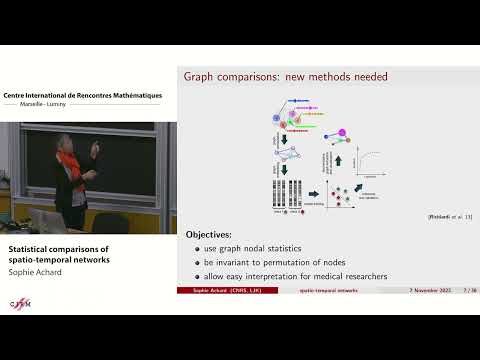Description:
Save Big on Coursera Plus. 7,000+ courses at $160 off. Limited Time Only!
Grab it
Explore statistical comparisons of spatio-temporal networks in this 49-minute conference talk by Sophie Achard at the Centre International de Rencontres Mathématiques in Marseille, France. Delve into brain network analysis, comparing healthy volunteers and patients using graph statistics. Learn about new methods for graph comparisons, including nodal statistics-based structural patterns and structural roles. Examine results from PC models with varying sparsity and orthogonality in simulated Watts-Strogatz and Barabási–Albert models. Discover applications in classification using orthogonality curves. Gain insights into the future of network analysis in neuroscience through this comprehensive presentation on machine learning and signal processing on graphs.

Statistical Comparisons of Spatio-Temporal Networks - Sophie Achard
Add to list
#Data Science
#Network Analysis
#Mathematics
#Graph Theory
#Computer Science
#Classification
#Science
#Biology
#Neuroscience
#Brain Networks